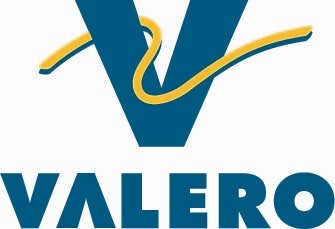Over the past several years, advanced extraction techniques have turned the energy sector on its head. The ability to retrieve natural gas from shale deposits, using horizontal drilling and hydrofracking, is so effective that the U.S. will soon become a net exporter, instead of a net importer of the fuel.
Natural gas exports from the U.S. are logistically challenging, and to most markets, banned. Without the ability to export surpluses to foreign markets, a natural gas glut grew out of control. In the spring of 2012, the Henry Hub natural gas spot price plummeted to below $2 per MMBtu.


WTI Crude Spot Price data by YCharts
Until recently, refining oil in the U.S. into more valuable end products like gasoline and diesel was a risky business with slim profit margins. A spike in crude oil prices nearly always resulted in refineries losing money for a while and praying for stabilization. Since WTI oil always rose and fell in tandem with Brent, refiners were forced to produce at a loss, or limit production until gasoline prices rose or oil stabilized.
As you can see in the chart above, the difference in price between WTI and Brent, often called the Crack Spread, has come unglued. The reason this is so exciting for U.S. based refineries has everything to do with conventional end product pricing. Despite the spread, Brent has been, and still is, the global benchmark used to set gasoline prices, even in the U.S.
The winners:
Although the Crack Spread has kept integrated energy giants with refineries in the U.S. in the black, it is the independent refineries that have the most to gain. So far this year, investors have been scrambling to acquire shares of Valero Energy Corporation (NYSE:VLO), HollyFrontier Corp (NYSE:HFC), and Marathon Petroleum Corp (NYSE:MPC).

Valero Energy Corporation (NYSE:VLO) is the world’s largest independent refiner. This behemoth has had a terrific run up of over 150% over the past 3 years, but still appears somewhat undervalued. As of March 1, it was trading at just 1.43 times book value, with an earnings yield of just over 8%.
Refining petroleum into conventional gasoline is Valero Energy Corporation (NYSE:VLO)’s main operation, but this Texas based giant does much more. Its refineries produce a wide range of products, including jet fuel and ultra-low-sulfur diesel fuel.
Valero Energy Corporation (NYSE:VLO) has taken on a great deal of debt over the past several years to become a larger and more efficient company. It spent nearly $3 billion building three Hydrocracker facilities that can use cheaper natural gas as a feedstock to produce diesel fuel. The first of these came online in December 2012, and is so far a success. The company also operates several ethanol refineries and a wind farm.
HollyFrontier Corp (NYSE:HFC) is a refiner that serves markets primarily in the Midwest, Southwest and into the Rockies. This independent refiner has the advantage of transporting and storing much of its crude feedstocks through a network of pipelines run by Holly Energy Partners, L.P. (NYSE:HEP), which helps to explain how it manages to deliver a return on invested capital of over 23.3%.
HollyFrontier Corp (NYSE:HFC)’s Q4 2012 earnings came in below average analyst expectations, and the Texas-based company’s share price has been a bit choppy since they reported. Even though it was a slight miss, this highly profitable company also appears undervalued. It is trading at just 1.7 times its book value, with an earnings yield of 14.7%.
A look at HollyFrontier Corp (NYSE:HFC)’s balance sheet makes it look even more attractive. This financially responsible company has a debt to equity ratio of only 0.2. Its TTM net income of $1.73 billion is more than enough to pay off 100% of its $1.34 billion in long-term debt. A current ratio of 2.7 and a 2.2% dividend yield make this downstream gem a prime candidate for my next long position.
In June 2011, Texas-based Marathon completed a spin off of its Ohio-based refining and marketing segment. Marathon Petroleum and its parent can trace their roots all the way back to 1887, when it was called the Ohio Oil Company. It was even purchased in 1889 by the infamous Standard Oil trust. It has merged and split and changed its name along its 125 year journey. I won’t pretend to know the entire history of the company, but what I do know is that before spinning off the downstream segment, Marathon Oil posted positive earnings from 1996 right up to the spin off, and both companies are still profitable today.
Over the past 12 months, U.S.-based Marathon Petroleum has gained over 101%. As of March 1, 2013, the company was trading at a slight discount with an earnings yield of about 11.6%. Net income for fiscal year 2012 came in at $3.38 billion, an increase of 41.8% over 2011. The company has proved that it can quickly grow earnings during an advantageous crack spread period. If the current crack spread, and gasoline and diesel margins narrow in the near term, Marathon Petroleum’s debt to equity ratio of 1.25 would become a serious concern.
If I had to pick one
All three refining and marketing companies are showing promise, but if I had to choose one, I would go with HollyFrontier. Its complex refineries have direct pipeline access to two cheap sources of crude feedstocks. Its refineries are linked to both the WTI hub in Cushing, Oklahoma, and heavy Canadian crude from tar sands extraction. It also appears to be the most undervalued of the three mentioned earlier. HollyFrontier’s location and strong financials lead me to believe this overlooked gem still has a great deal of upside.
The article The Crack Spread Scramble originally appeared on Fool.com.
Copyright © 1995 – 2013 The Motley Fool, LLC. All rights reserved. The Motley Fool has a disclosure policy.



